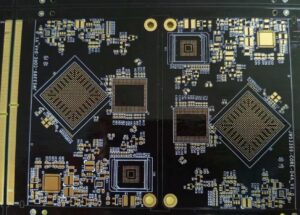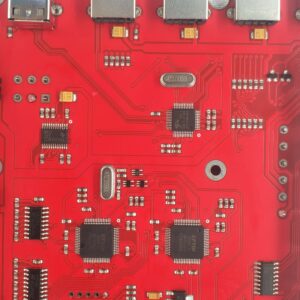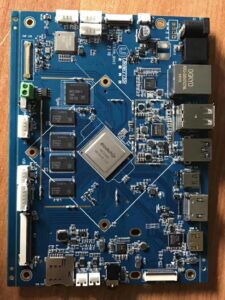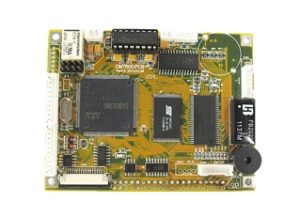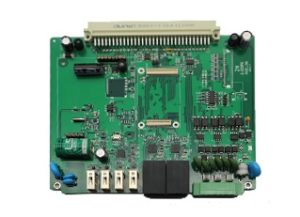PCB is the printed circuit board, an essential concept in electronics. It is the base that forms the core of every electronic device. Its standard color is green, but now it is available in different colors. However, PCB color does not affect its performance. What’s more, PCB color is essential, so we will discuss different PCB colors and how to select them according to your requirements.
PCB color:
PCB color is usually the color on the solder mask. It is usually oil color. Its primary function is protection from short circuits. The solder resist’s color matches the PCB’s surface color. A resin has been hardened to make PCB board coloring pigment. Colored pigments are present on this resin that has solidified. PCB colors refer to their codes. PCB usually comes in green, blue, yellow, black, red, purple, and brown colors.
Pros of different PCB colors:
With the advancement in technology, PCB comes in colors other than green. Different colored PCB makes them brighter. It helps prevent mistakes that may occur with the same color confusion. Recognizing meetings that don’t include lead is another benefit of choosing different color PCBs.
Cons of different PCB colors:
Although colors do not affect the performance of the PCB, it interrupts the system’s design. It may be costly, time wastage, and complex sometimes.
Solder mask color:
A printed circuit board usually covers with a thin polymer coating known as a solder mask. Color is one of the most critical design factors for every printed circuit board. Green has long been the color of choice for solder masks.
Types of PCB solder mask color:
Green pcb:
Green is the mostly preferred PCB color. As a result, many people have always misbelieved that PCBs are green or that most are green. The contrast between traces, vacant areas, and planes is evident on the green PCB. Green improves the printed circuit board’s clarity. Because the green PCB will make the white color stand out sharply, making it easier to read. Additionally, the green PCB surface treatment will cause the reflection of light to decrease, lowering glare. The green PCB is, therefore, crucial for printed circuit boards that need careful inspection.
The most popular color for printed circuit boards is green. It is a result of the green color’s superior performance compared to other PCB colors. When it comes to soldering the component pitch, green produces exceptional outcomes. That is why the color green considers the standard for printed circuit boards.
Black pcb:
Black solder mask is conductive due to the presence of carbon, although it is costly. Then, black PCB produces low contrast, which is significant. However, it condenses light and has small shadows, which makes it difficult to track. As a result, using black PCBs in various high-temperature applications is not recommended since they risk fading the screen printing.
Red pcb:
One of the striking and polished solder mask colors is red. Some companies use red color in PCB manufacturing because of its excellent visibility and a good contrast between planes, traces, and blank spaces. The red PCB serves as the background, which makes the silkscreen stand out beautifully. Red solder resists cleaning the flux residues very well.
Red PCB is helpful in detecting any specific part that is present in the group assembly. Precision equipment like analog resources, oscilloscopes, and bench multi-meters frequently employ red solder masks.
Blue pcb:
Blue PCB is a heavy board because it offers a lot of screen-printing contrast. Although the blue PCB color is less striking than the green, white, or black PCB colors, it is still the most popular choice since it offers many aesthetic options. Because the blue PCB does not provide strong contrast borders and vibrant background colors, mounting it on the LCD is excellent. Blue solder mask is mainly used in LCDs to prevent systemic distractions. If we take blue PCB vs. green, green is still superior to blue and all other colors.
Yellow pcb:
The yellow PCB has become popular worldwide. Yellow color highlights PCB routing effectively. Yellow PCB may quickly satisfy various demands, including style, cleanliness, and visibility, much like many other new PCB colors. Although yellow PCB has a nice appearance, it has a weak contrast with traces and screen printing, which is a significant drawback. Yellow PCBs are, therefore, difficult to utilize in many typical applications.
White pcb:
PCB will have a striking aesthetic appeal with a white solder resist. White PCB is becoming in popularity since it seems clear in many settings. The unique quality of this color is that it aids in emphasizing particular PCB elements.
White PCBs are still not the first choice to their propensity to conceal traces. It will be challenging to check the white PCB with just one flashlight. Black screen printing looks fantastic on these white PCBs. White PCB use in LED only.
Purple pcb:
Purple color PCB is the most expensive and is only used in submarine circuit boards. What’s more, Purple color makes circuit testing easy and effective.
PCB Solder Mask differences:
Electronic assembly production may be affected by colors. Different colors other than green are allowed to use. PCB color does not affect the performance; hence it can create additional problems in PCB designing. However, it will be costly, taking a lot of time and energy.
PCB Silk Screening:
Silk screening applies a thin layer of ink to write detailed information about PCB. It is an essential part of PCB manufacturing as it helps identify the PCB components, marks, symbols, and logos. Silk screening utilizes non-conductive ink, which comes in yellow, black, and white colors. PCB software uses standard fonts for silk screening. Colors and fonts can also customize, but it will be expensive and complicated.
Silk screening takes a total of 10-15% cost of the total PCB manufacturing cost. Price is mainly counted for the method of silk screening. Some ways use expensive acrylic ink, and others use epoxy ink. The design of the silk screening depends upon spaces, color, font’s thickness, font width, etc. You can reduce the silkscreening cost by printing only over the top side of the PCB board and using standard fonts and colors. Three methods are used for PCB silk screening, as discussed here.
- · Manual silk screening performs by using stencils. This is the easiest method of silk screening. In this method, ink processes under baking to make silk screening perfect. This allows the printing of significant texts also.
- · Liquid photo imaging (LPI) performs by coating the board under epoxy and then processing through UV radiation. This method is similar to a solder mask. This produces the most accurate and high-quality silk screening. This process is mainly used to print lines.
- · Direct Legend Printing (DLP) is the most expensive method. It uses acrylic ink and an inkjet projector. The ink spreads over the PCB board by CAD software and then processes through UV light.
Why are PCBs green:
A standard circuit board’s physical core has a dull yellow color. A PCB that looks “green” is not green. The solder resists, solder mask or solder grease is the green component. The boards are coated with a solid resin that has colored pigments using a silkscreen technique. Solder masks regulate the flow of molten solder and shield the electrical traces beneath from dust and moisture.
Green is a standard color to use in PCB. The green color is visually friendly and the least tiring color. Workers prefer green because it does not affect inspection and is a fatigue reliever. Green color PCB is superior to any other color PCB because it quickly identifies residues and traces in the PCB board. It does not hurdle inspection as it creates high contrast. It plays an essential role in manufacturing as it has excellent visual properties. Green color PCB is beneficial because it does not affect inspection, is cost-effective, and produces good results. That is why most of the PCBs are green.
Conclusion:
PCB is the central part of every electronic circuit. If it gets some defects, it will affect the whole system. The manufacturer is increasingly likely to run out of designs with enough information to cover an entire panel simultaneously as particular features need to be added. So be careful and professional while designing PCBs.
You must choose the perfect color for your PCB, which is cost-effective and ideal in every aspect. Different options are available with variables like board thickness or solder mask color. Even if the manufacturer agrees to fulfill your particular requirement, you can have to pay for the complete panel. This increases waste production and hence raises costs. Most producers save costs by limiting specific color and feature combinations.

